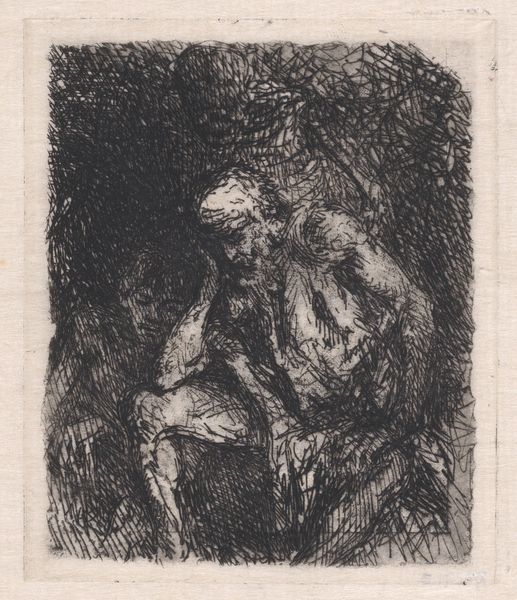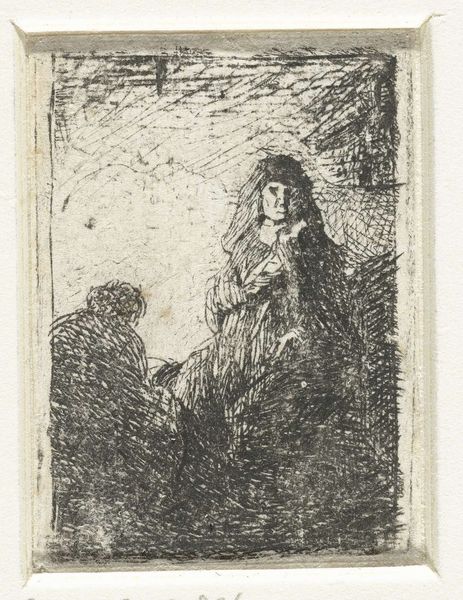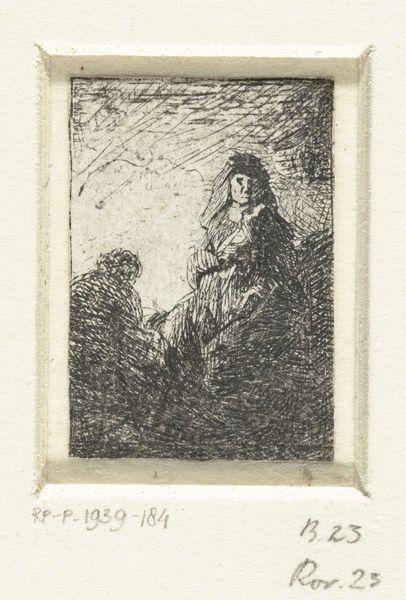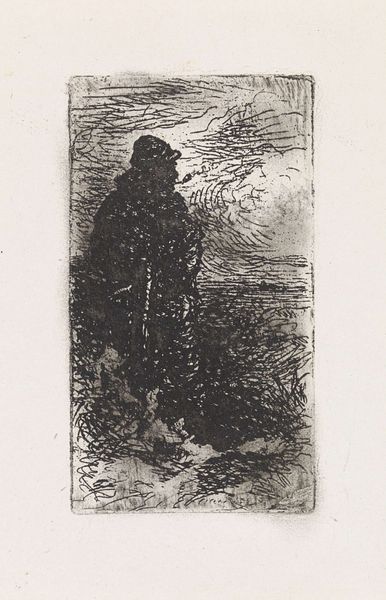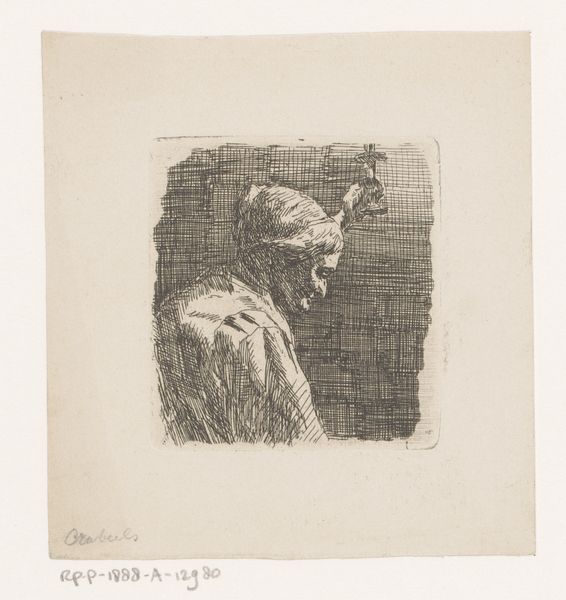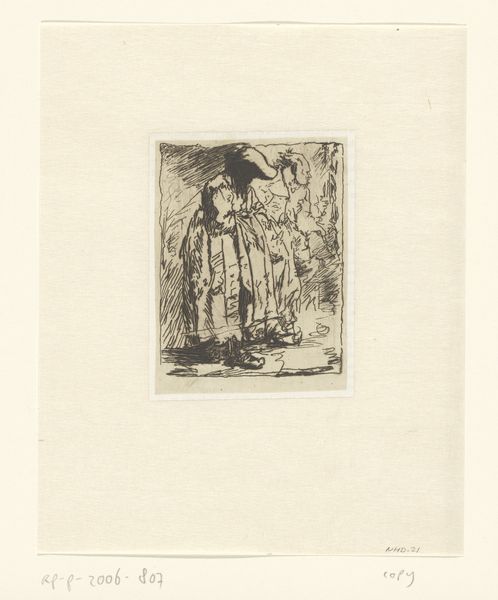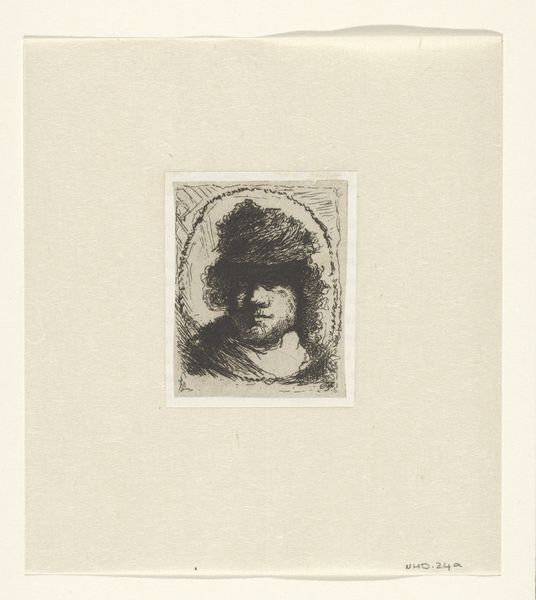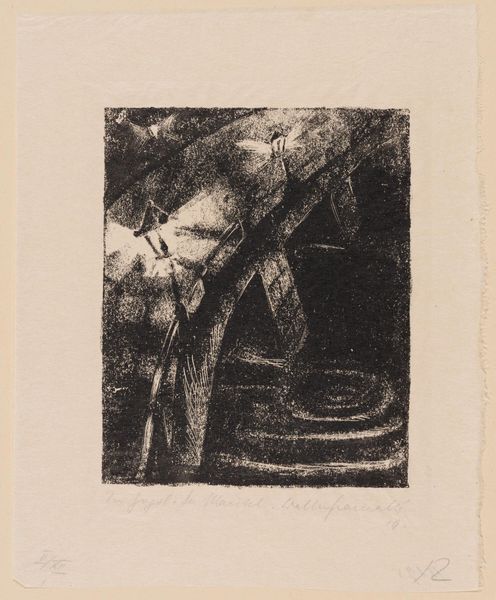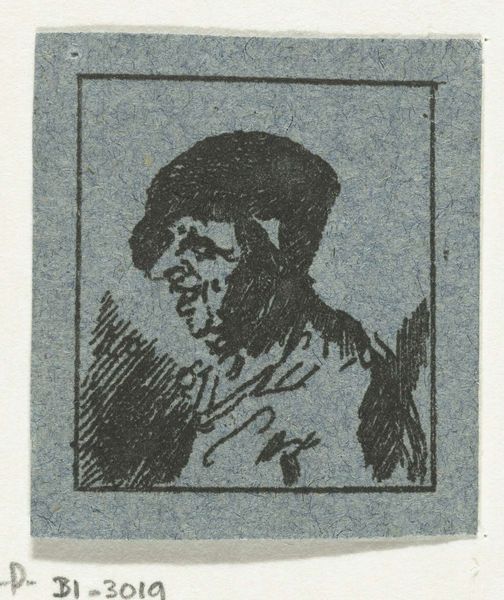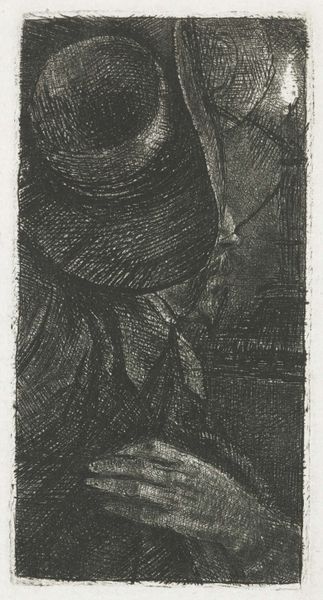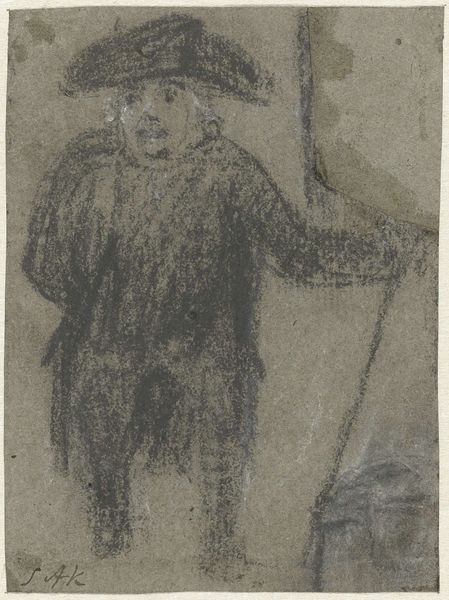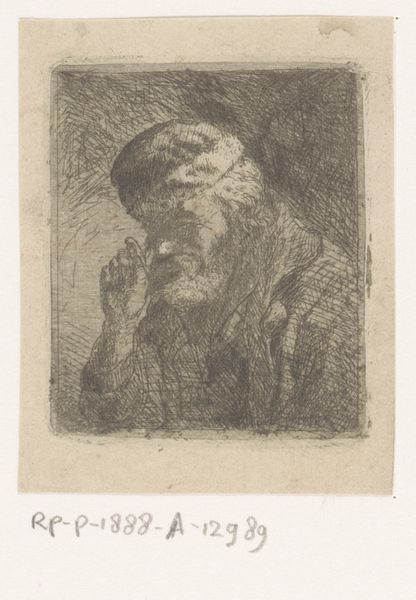
print, etching
#
portrait
# print
#
etching
#
figuration
#
history-painting
Dimensions: height 51 mm, width 56 mm
Copyright: Rijks Museum: Open Domain
Christina Chalon created this etching of an unknown old woman in the late 18th century. The printmaking process is crucial to understanding its appeal. An etching like this begins with a metal plate, likely copper or zinc, covered with a waxy, acid-resistant layer. The artist then scratches an image into this layer, exposing the metal. When the plate is dipped in acid, the exposed lines are eaten away, creating grooves. Ink is applied to the plate, filling these grooves, and the surface is wiped clean. Finally, paper is pressed against the plate, transferring the ink and creating the print. Look closely, and you can see the dense network of tiny lines that give the image its form. This technique allowed for multiples to be made relatively easily. In a time when the art market was expanding, etching facilitated wider distribution, making art more accessible to a broader audience. It's a fascinating example of how a particular process shaped not only the artwork, but also its social context.
Comments
No comments
Be the first to comment and join the conversation on the ultimate creative platform.
